King Island Photography Safari, day 4
Our last day on King Island. Our simple breakfasts had become a routine, and every morning, a feeling of excitement and anticipation – what will I photograph today? Our flight to Melbourne was at 12.20pm, so we had just a couple of hours left to spend out in the field.
 Nutri-Grain and orange juice. I don’t like a lot of milk with my cereal – I splash on just enough milk to moisten the cereal. There’s barely any liquid in the bowl.
Nutri-Grain and orange juice. I don’t like a lot of milk with my cereal – I splash on just enough milk to moisten the cereal. There’s barely any liquid in the bowl. We went to photograph Naracoopa Jetty. The clouds and light kept shifting, and a brief light shower changed the colours of the rocks.
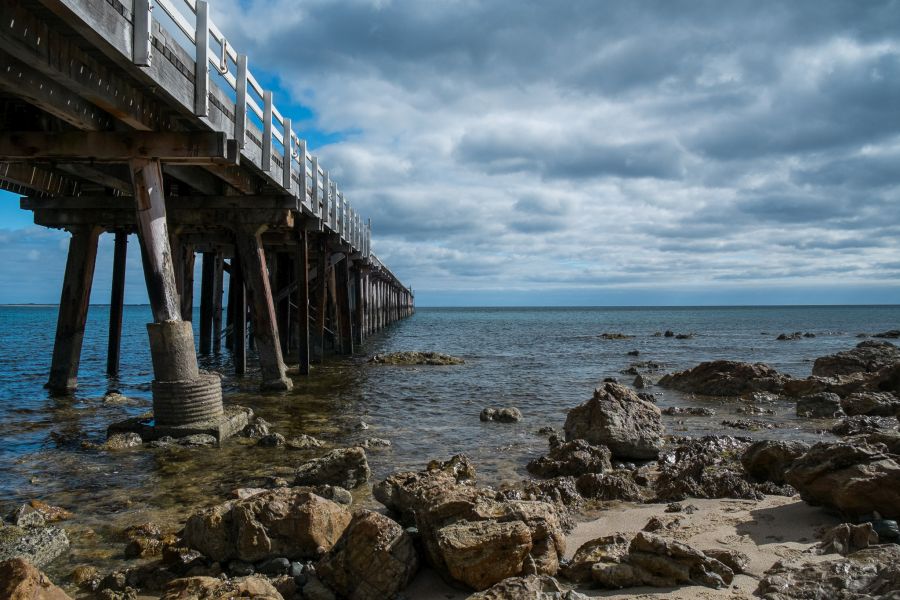
The jetty was first opened in 1916, fell into disrepair and was placed under a demolition order by the Tasmanian Government in 2006, but as a result of community protest was restored rather than destroyed. The King Island Council established a restoration program to save the jetty, which was officially reopened in 2010.
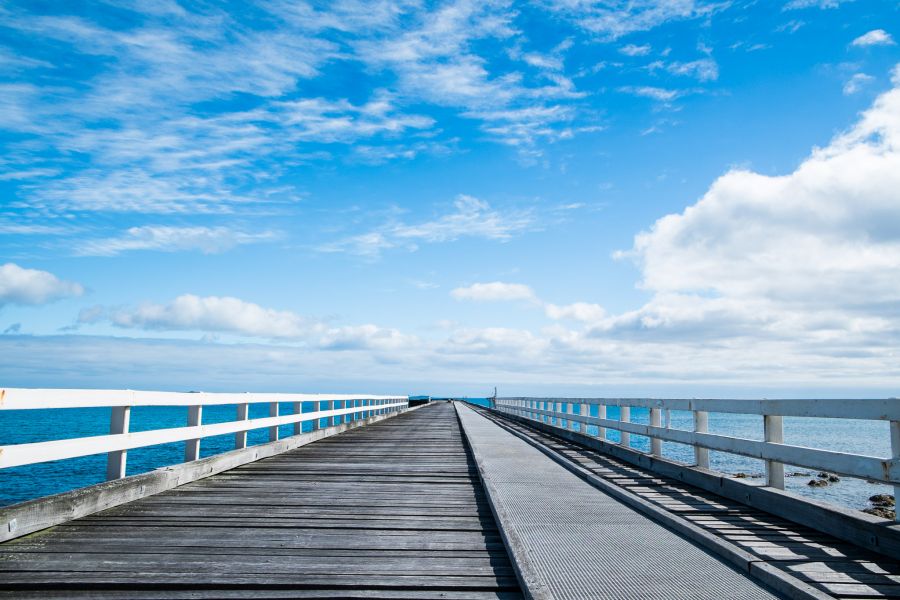
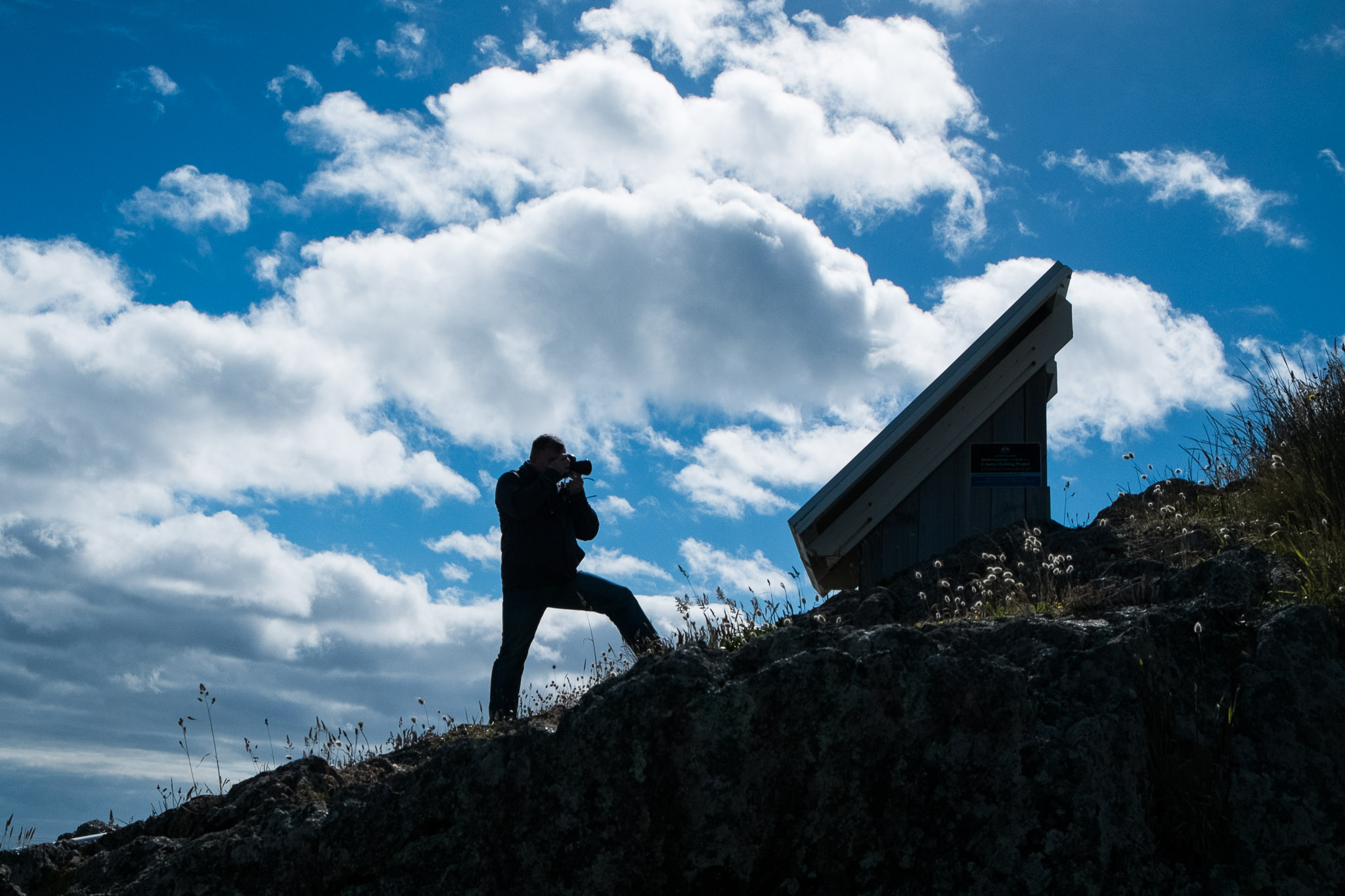 I spotted Craig in action took this shot with him in silhouette, to get him looking almost like a monument himself. This monument would be called ‘Photographer on the hill’
I spotted Craig in action took this shot with him in silhouette, to get him looking almost like a monument himself. This monument would be called ‘Photographer on the hill’We got back in the OKA and Ian presented us with a choice for our final activity: to photograph a cray boat coming in with its catch or grab a coffee in town. Easy decision: cray boat. The fishermen were happy for us to take pictures as they went about their business, unloading cage after cage of crays, fearlessly reaching in and deftly handling the crayfish as they thrashed and scuttled about, tails whipping. It was lightly drizzling as we took our shots.
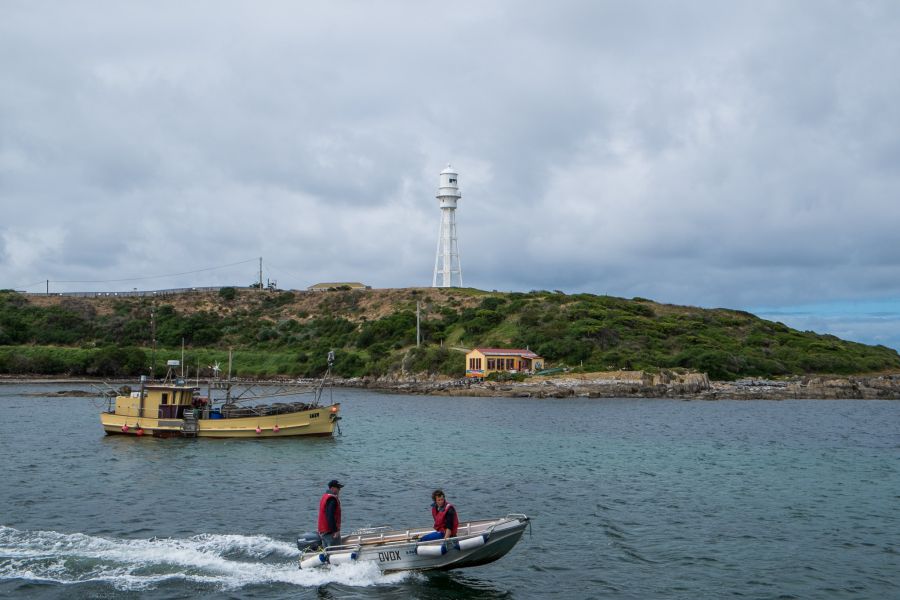 In the background, a last look at the ‘restaurant with no food’
In the background, a last look at the ‘restaurant with no food’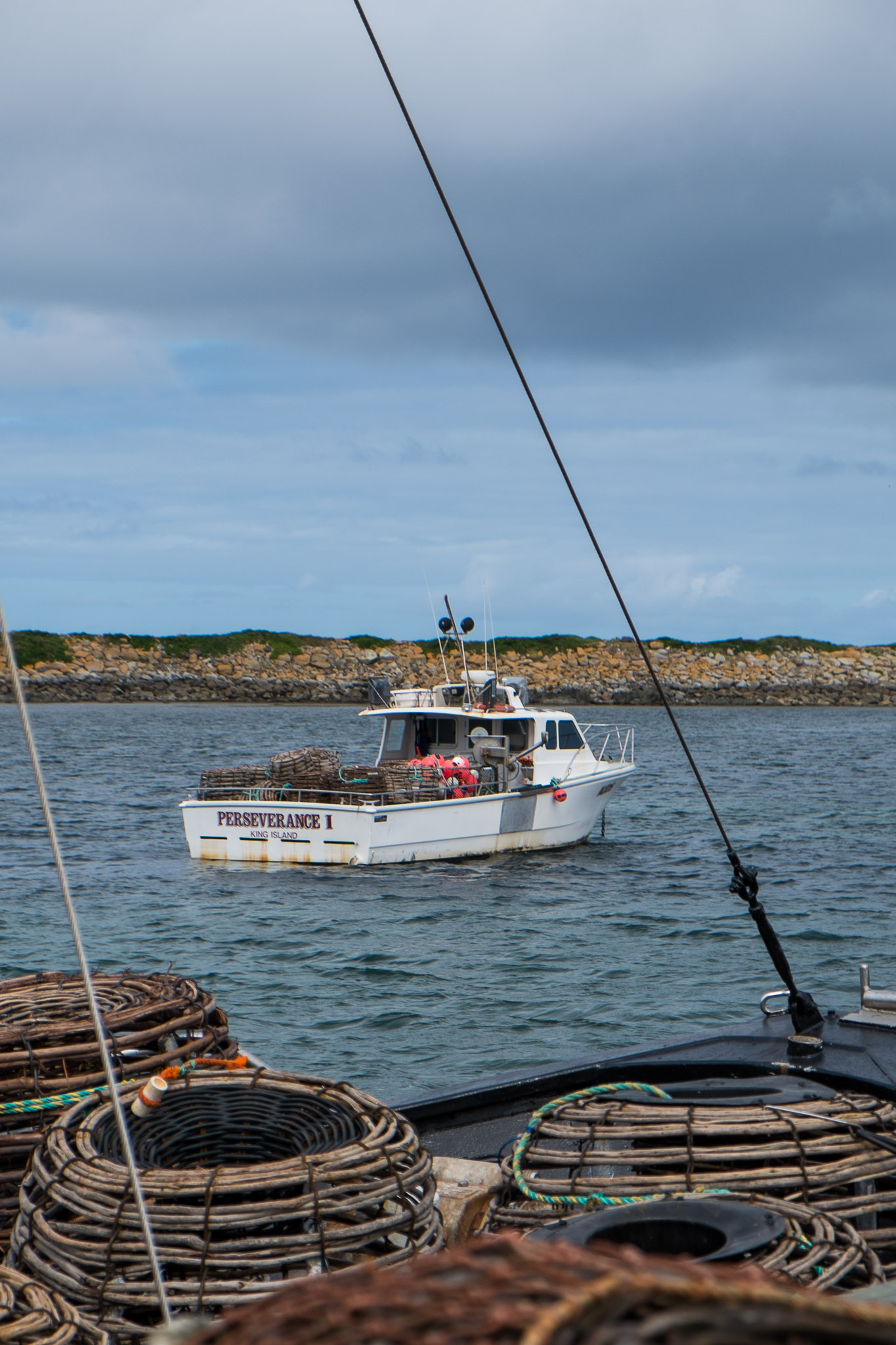 The sky grew darker as it drizzled
The sky grew darker as it drizzled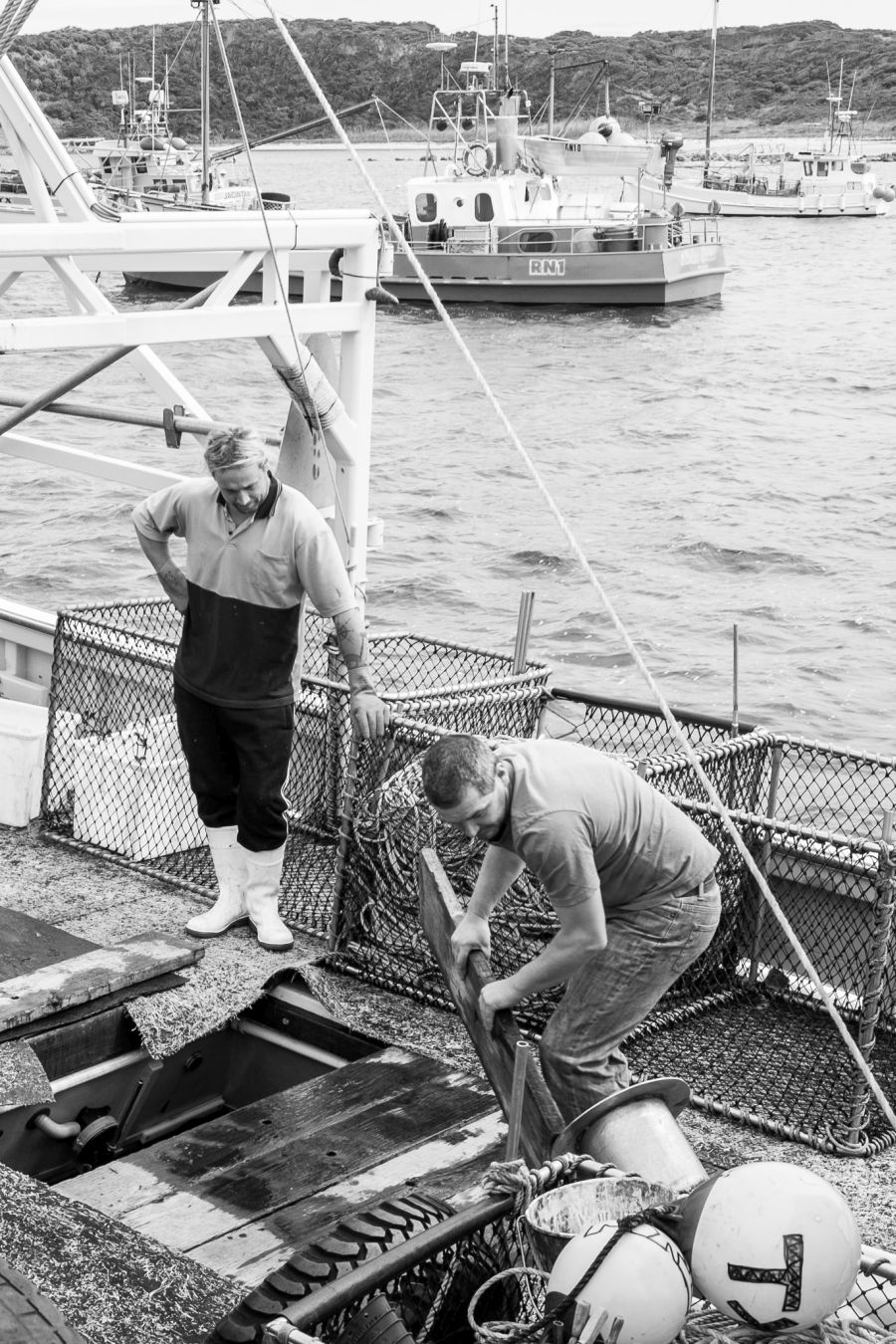
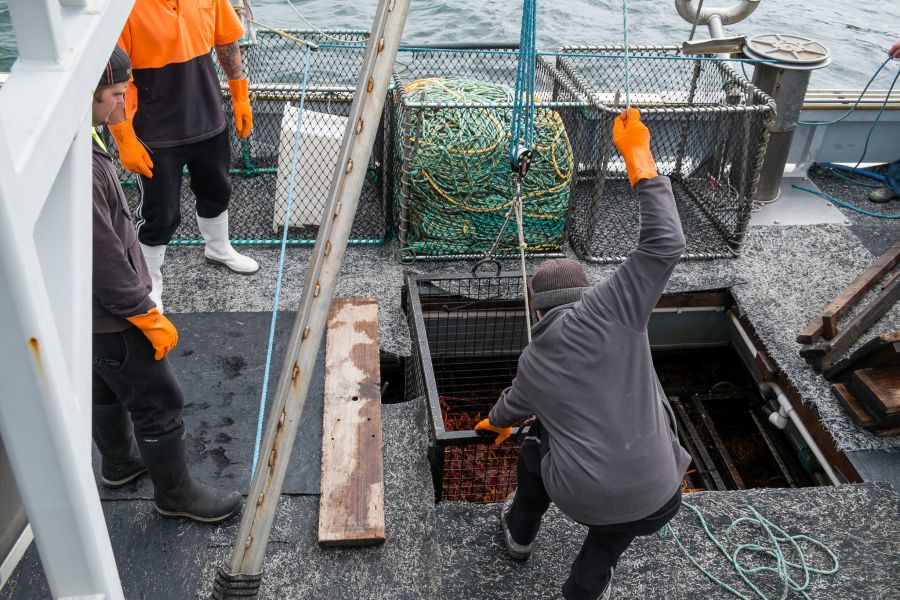
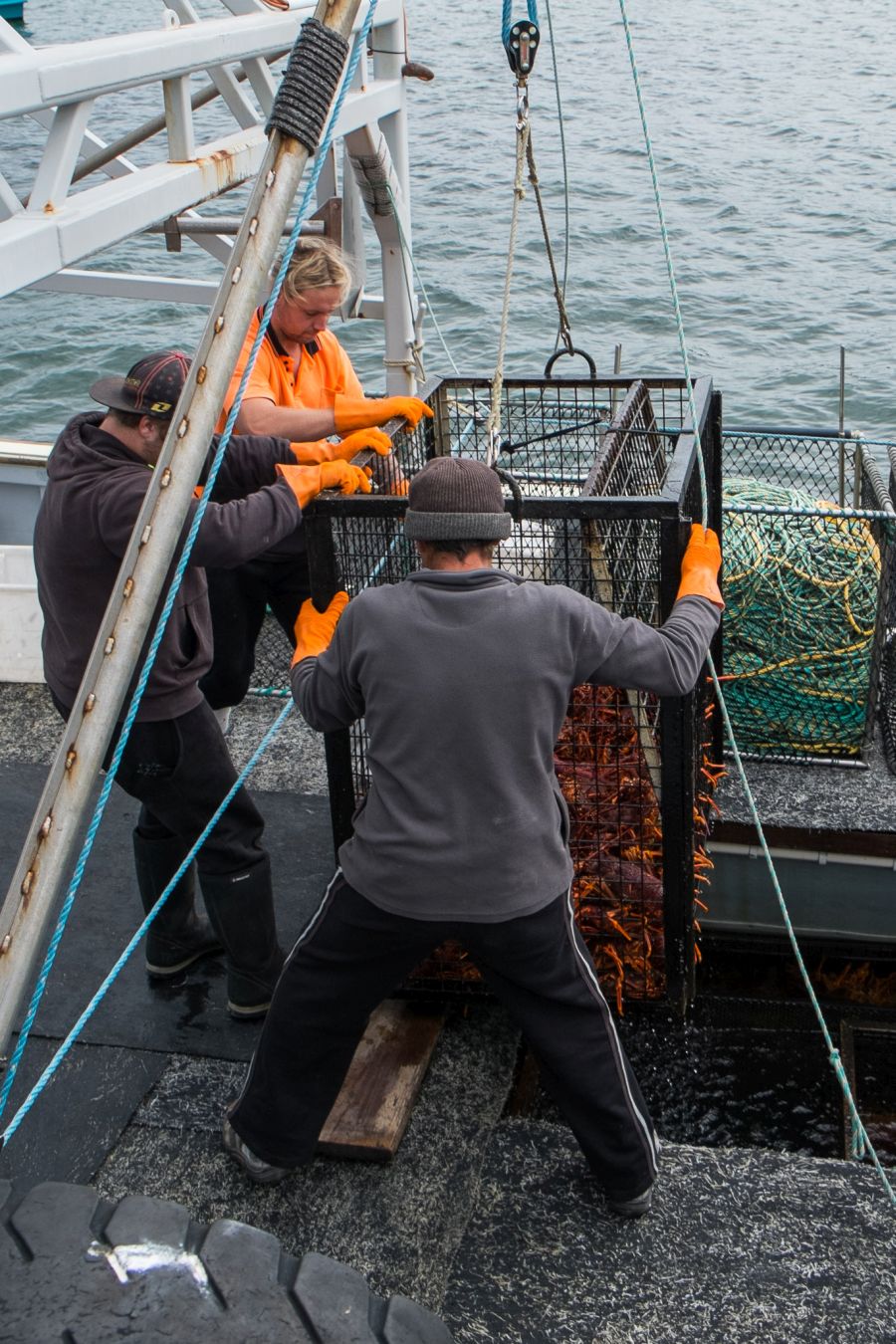
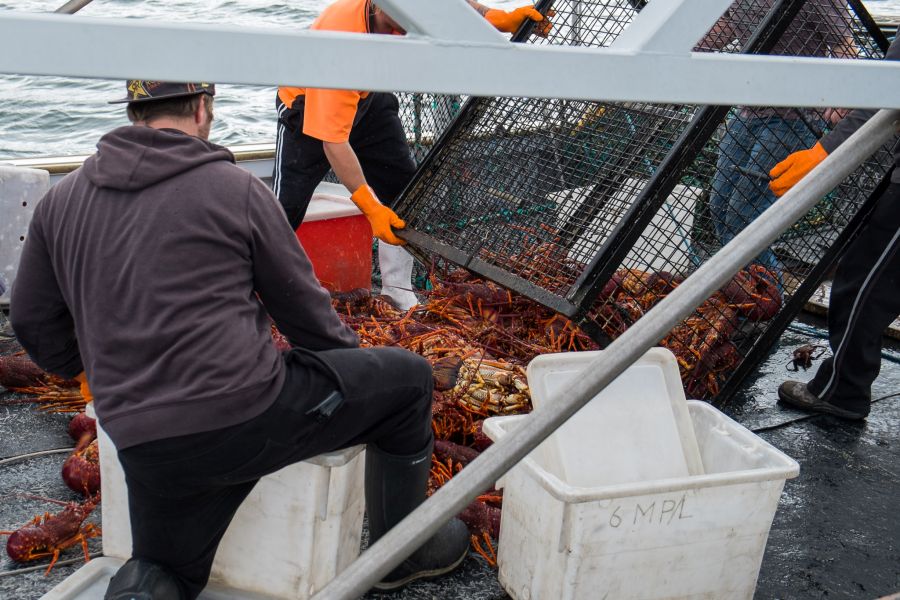
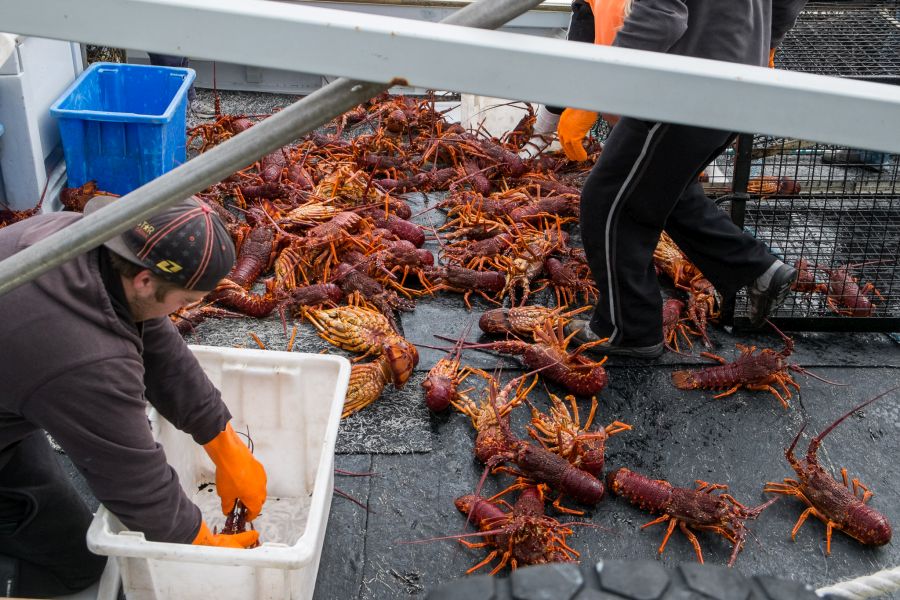
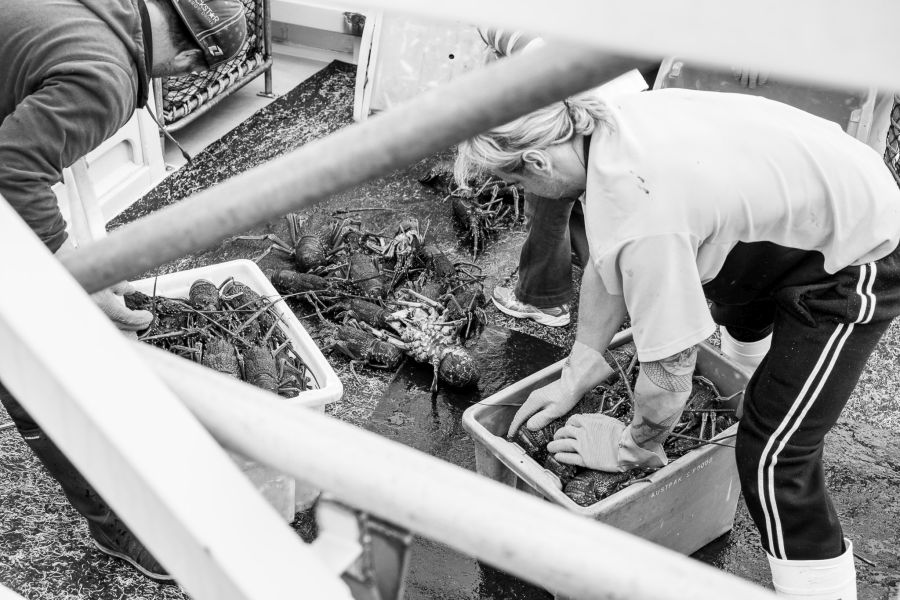
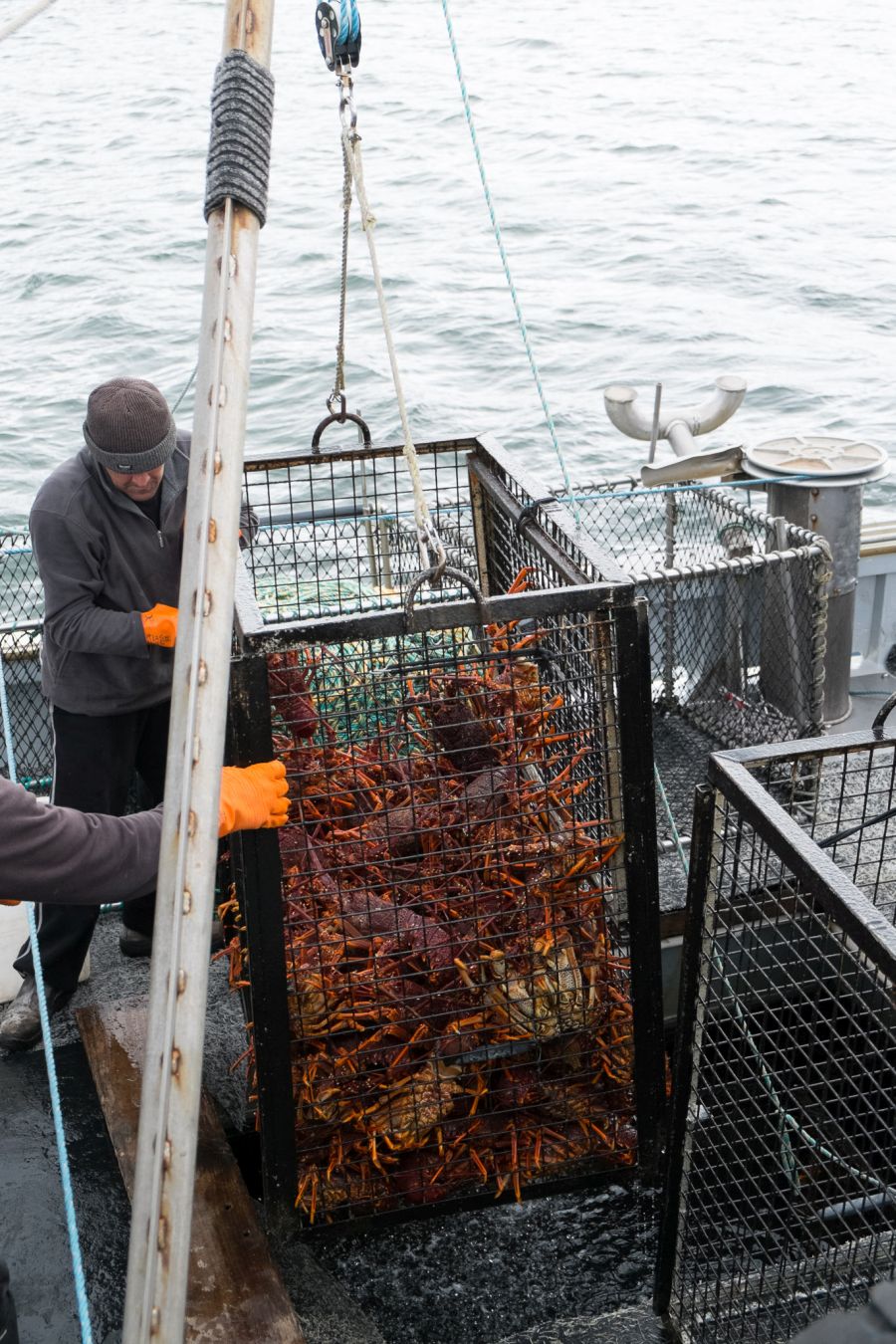
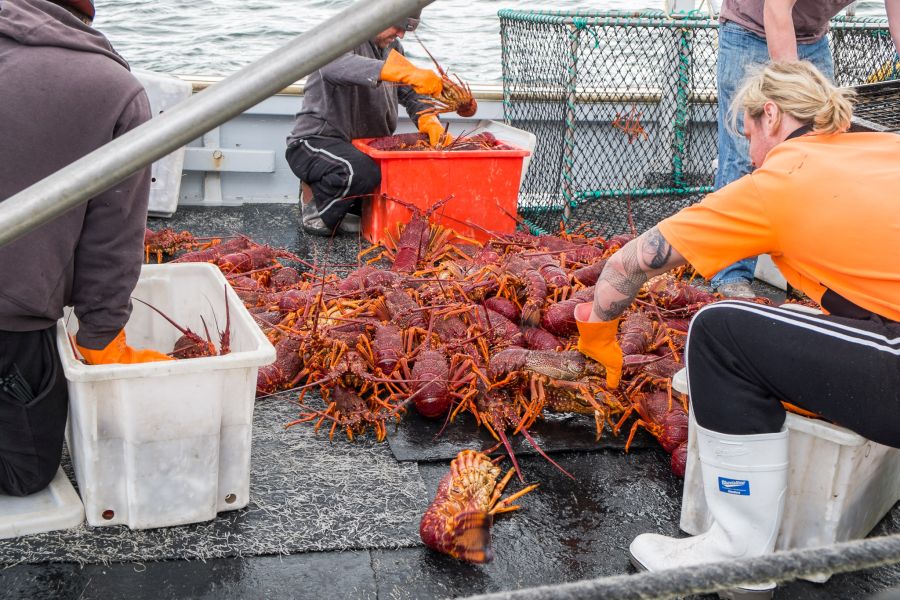
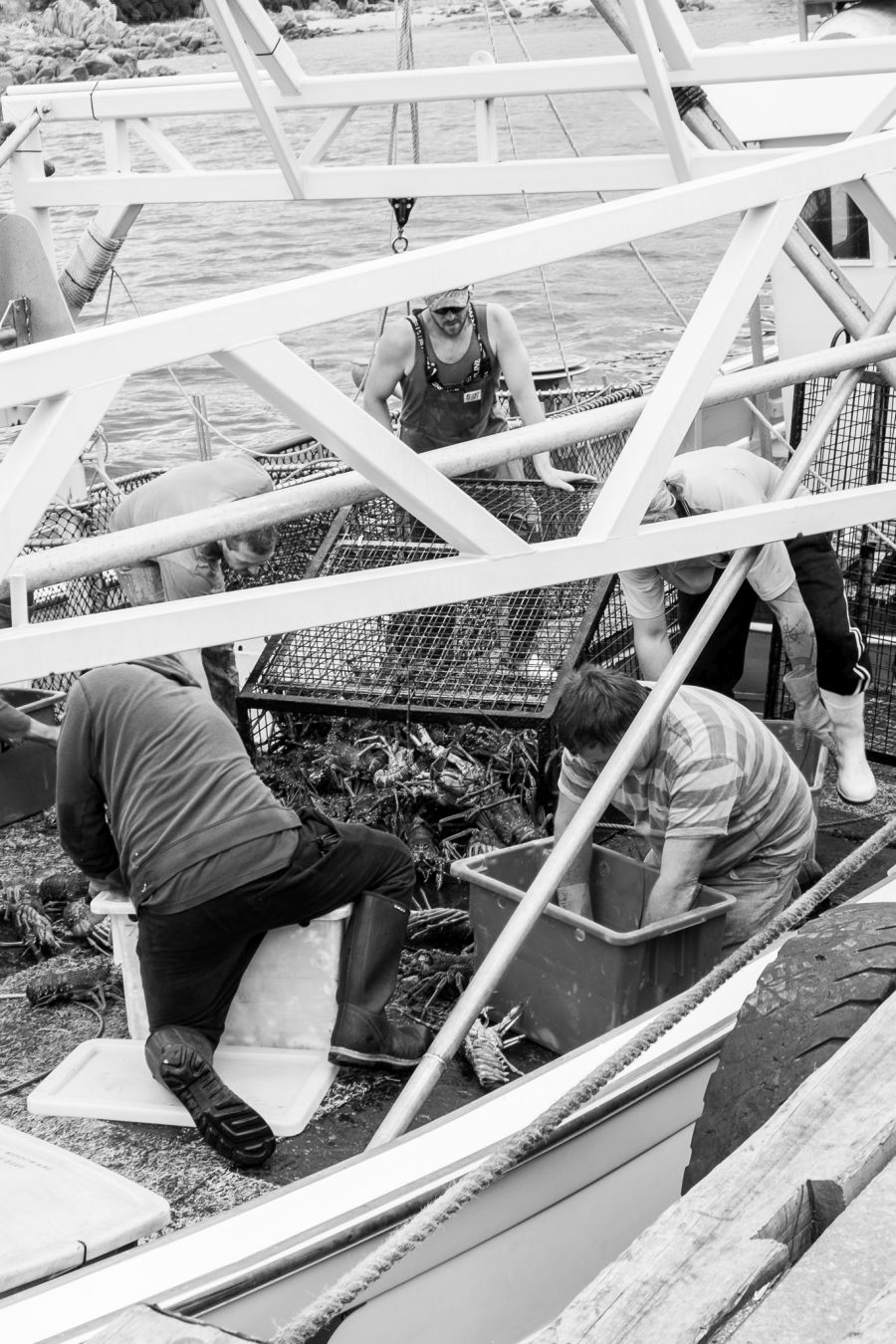
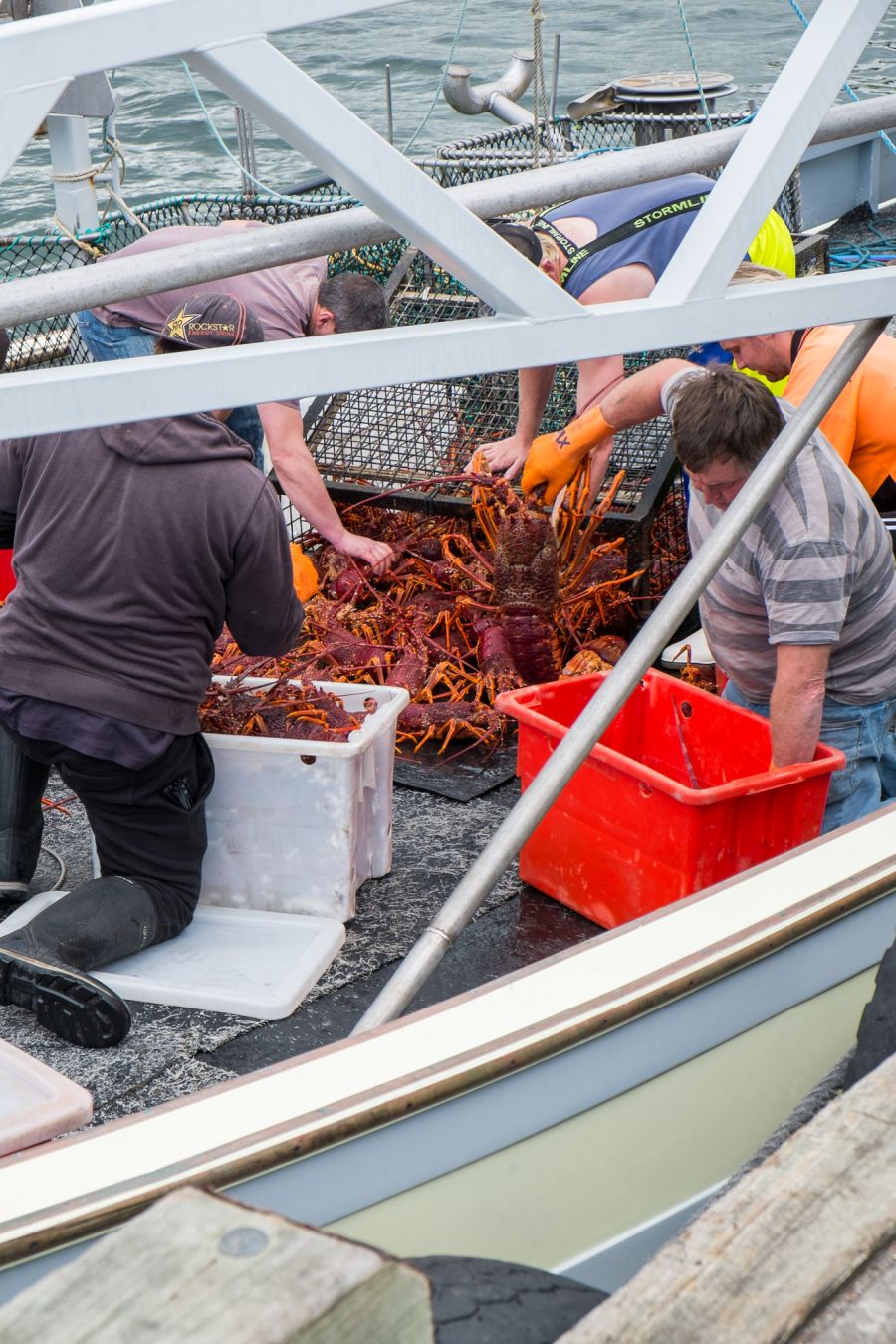
It was time to say good-bye. I was sad to leave King Island but looked forward to seeing Jac again for six nights in Hobart. Ian drove us to the airport, made sure we were all checked in and then said his farewells – he had more guests to look after, back at the motel.
King Island Airport, near Currie, is owned and operated by the King Island Council. Currently, three commercial airlines fly to the island – Sharp Airlines, King Island Airlines and Regional Express (REX). We flew to King Island via Melbourne on REX.
You may be wondering why we flew to Melbourne rather than our intended destination of Hobart. There’s no direct commercial flight from King Island to Hobart, so we booked return flights via Melbourne and a separate domestic flight from Melbourne to Hobart.
The ‘Airport Shop’, more of a kiosk, sells hot coffee, chocolate, small snacks and King Island products. On display were bottles of Cloud Juice, King Island Dairy cheeses, enormous tins of King Island abalone, and an almost 2.5kg slab of King Island beef. If you’re hungry pre-flight and you fancy something more substantial than chocolates and potato crisps, I suggest grabbing a bite elsewhere before you get to the airport, as your options will be limited.
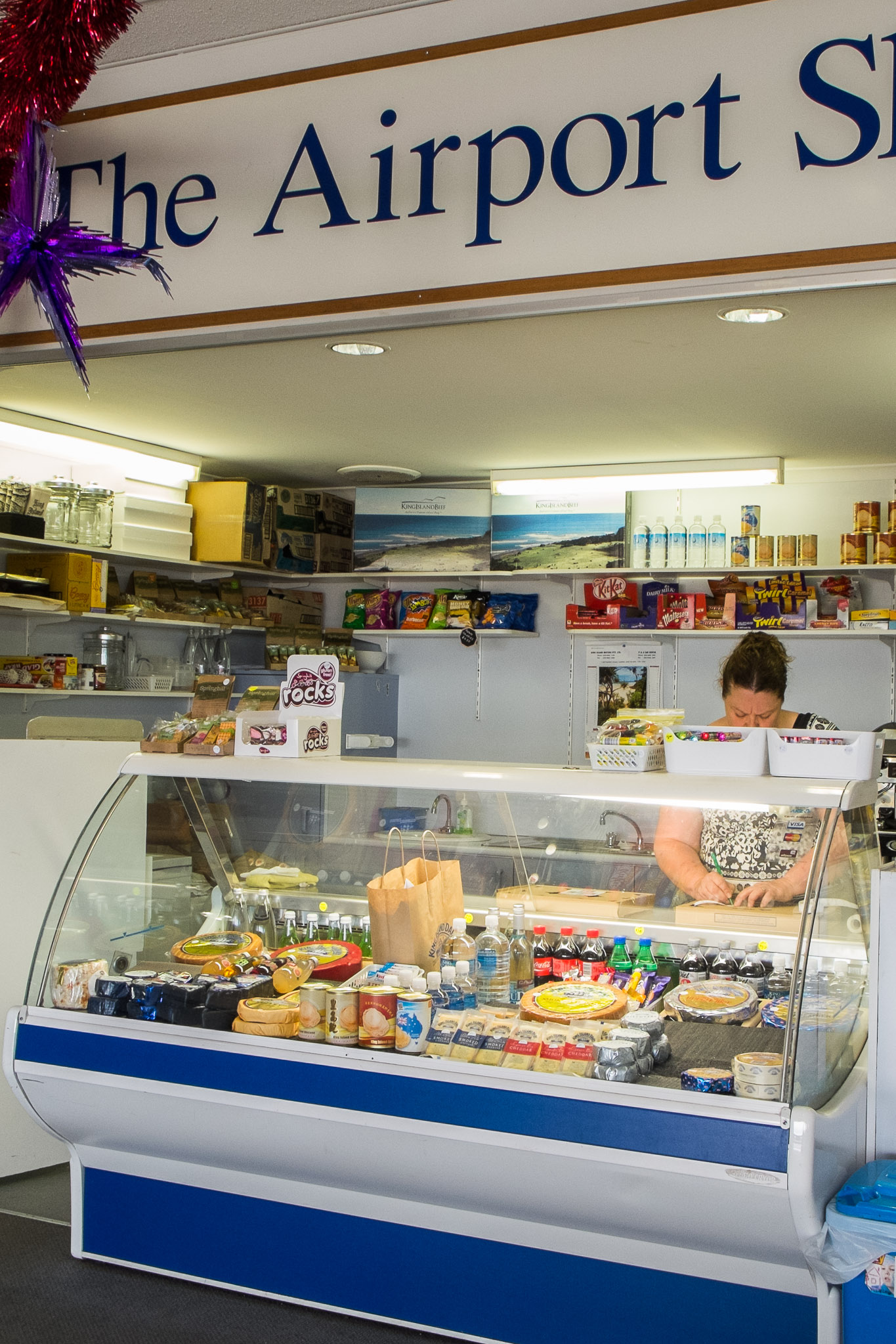 The Airport Shop comes to the rescue.
The Airport Shop comes to the rescue. It was Christmas eve and our flight to Melbourne was fully booked. Our carry-on luggage wasn’t weighed at the REX counter back in Melbourne Airport, but here at King Island they did weigh our carry-on items. My bag was just under 6kg, well within the 7kg limit. A couple of passengers got caught out at the weigh-in and had to hurriedly repack. I try to avoid such stressful situations wherever possible while travelling, so I carry a portable electronic travel scale to weigh my luggage as I’m packing.
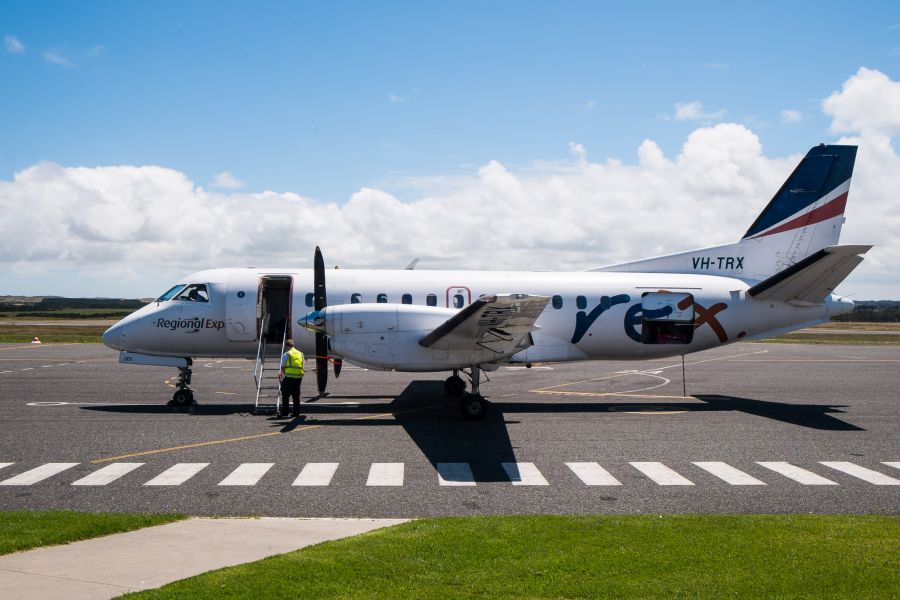 The Rex Airlines plane that took us to Melbourne
The Rex Airlines plane that took us to MelbourneThe plane was a 33-seater with a seating configuration of 2 seats, aisle, 1 seat. As is typical for small planes, flexible/soft carry-on bags are easier to negotiate into the limited overhead locker space or under the seat in front.
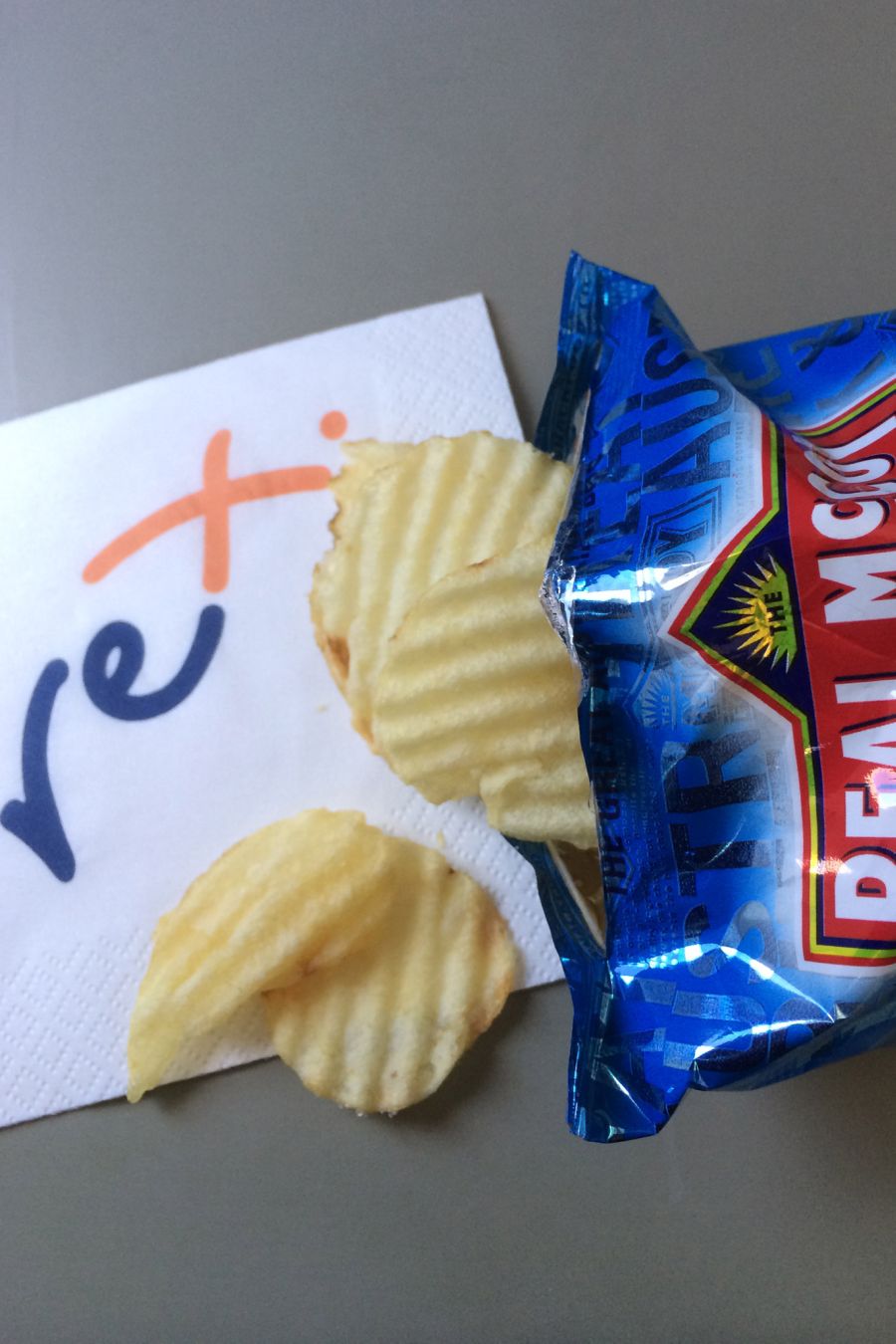 Savoury snack on King Island to Melbourne flight – potato crisps
Savoury snack on King Island to Melbourne flight – potato crispsI had a fantastic time on King Island. Ian and Lucinda’s hospitality was wonderful, and the food we ate was a highlight of the trip. I’d love to return and try more of the restaurants on the island.
King Island really is a beautiful place, especially worth visiting if you are into nature, landscape photography or maritime history, or after a country getaway with peaceful beaches, friendly locals and fantastic produce.
When we arrived at Melbourne Airport, we had to go through security again (literally) as soon as we stepped into the terminal building. No drama, but unexpected.
More adventures to come – Christmas in Hobart!
The complete King Island photography safari series
King Island
- King Island is located in Bass Strait between the states of Victoria and Tasmania, Australia (it is a part of Tasmania).
- The island is 58km long and 21km wide. There is no public transport on King Island, but car rental and guided tours (4WD, private small bus) are available.
- The population of King Island was 1,566 at the 2011 Census.
- Telstra Next G is the only mobile service on the island.
- Find out more about King Island: King Island Tourism
Getting to King Island
- There are no passenger ferries to King Island. The only options are to fly from mainland Australia via Melbourne or from Tasmania via Wynyard or Launceston. See more on how to get to King Island.
- We flew to King Island via Melbourne on Regional Express (REX) Airlines.
- The flight is approximately 50 minutes. Passengers are served a sweet or savoury snack and a drink of water.
King Island Photography Safari by King Island Holiday Village and Tours
This trip wasn’t sponsored – we paid for everything ourselves. We got in touch directly with Ian and Lucinda via their website and organised a tour from 21 to 24 December 2014 (4 days/3 nights).
We paid AU$2088 per person which included:
- Return flights Melbourne to King Island (I travelled to Melbourne from Perth; Craig and Caroline came from Sydney)
- 4 days touring King Island in the all-terrain, air-conditioned OKA vehicles
- 3 nights accommodation in a queen ensuite room
- 3 x two-course dinners featuring King Island produce
- 3 lunches, including a couple of fantastic meals cooked outdoors on location
- 3 morning teas
- Continental breakfast every morning
King Island Holiday Village and Tours
King Island Holiday Village offers a range of accommodation options
We stayed at King Island Motel – part of the safari package
1 Bluegum Drive
Grassy, Tasmania 7256
Telephone: (03) 6461 1177
Photography notes
- Rex Airlines baggage limits are 7kg for cabin and 15kg for checked-in luggage. I carried all my camera gear in my cabin luggage except for my tripod which was in my checked-in bag.
- I took my Fujifilm X-E1 camera (mirrorless camera, not a DSLR) with three lenses: 23mm, 18-55mm and 55-200mm, all with their lens hoods. I used the 18-55 the most while out and about. I switched to the 55-200mm when photographing wildlife, such as the terns on the first day, and wallabies, which we saw every day on the island. I used the 23mm for food shots e.g. at dinner time. It can be very windy on King Island; we all changed lenses only within the vehicle.
- I brought 3 spare camera batteries, which I used in rotation over the four days, and charger. At most I changed batteries twice in one day. While battery life of mirrorless cameras will never match that of DSLRs, I have been reasonably impressed with the X-E1’s battery life. Two spares would’ve been enough to carry around for the day.
- The X-E1 is not weather sealed, and knowing we might be photographing in wet weather, I packed a few plastic bags to protect my camera from the rain. I cut a hole in the plastic bag for my lens to poke through. It’s a little unwieldy as the plastic bag flaps in the wind and you have to keep making sure it doesn’t cover any part of the lens, but it’s a cheap method for keeping a camera sufficiently dry. The wettest weather we experienced was on the first day of the safari; it was pretty good the rest of the time, with only patches of light drizzle.